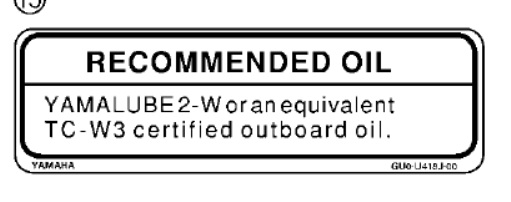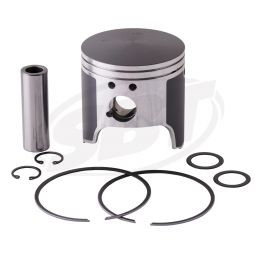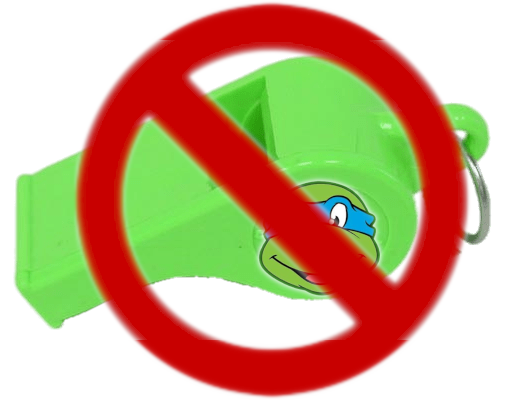In this tech article, I’m going to go out on a limb and tackle one of the ultimate “third rail”, “troll”, and “let’s get into an argument” questions:
WHAT OIL SHOULD I RUN IN MY JET SKI?
Well, that’s a simple question, and the answer is surprisingly simple:
1. You have to run oil. Oil is not an ADDITIVE – it is a COMPONENT – a required part needed to make the engine run.
2. It doesn’t matter what brand you use – there are many good brands.
3. It does matter HOW MUCH oil you use – too much and it runs bad, too little and it breaks.
DOES IT REALLY NOT MATTER WHAT BRAND OIL I USE?
It really doesn’t. For Yamaha 2 strokes (including power valve engines) the factory is very clear:

This means that any TC-W3 oil which is an equivalent to Yamalube 2W is ok to use. TC-W3 is a marine specific certification which has been the industry standard for years.
And, while this guideline paints a wide brush, it also says that basic (found everywhere) TC-W3 outboard oil is within the spec. This truly means almost any 2S oil on the shelf will meet the factory spec, and the factory is the expert. It’s hard to disagree with the guys that make the engines.
Does this mean you can use “any” oil? Certainly not. If you shop at your local convenience store, next to the Slim Jims, they might have stuff like this:

This product used to actually say “do not use if you need a high quality oil”.
Many of the oils on the shelf are going to be TC-W3 rated (so ok), and there are some easy to find, relatively cheap, very good oils, and these are the products I recommend for most engines. Pennzoil Semi and Yamaha 2W are the products most of my customers are using ($18 to $25/gallon).
HOW MUCH OIL SHOULD I USE?
Since factory recreational skis come with oil injection pumps, they generally don’t specify a specific mix ratio. (Most variable pumps run between 32:1 and 100:1, depending on throttle position).
You don’t need to worry about “how much oil” for engines with oil injection pumps, it measures the oil for you. You just need to keep the reservoir full.
If you are going to eliminate the oil pump (common modification) you need to know what ratio to mix. Kawasaki and Yamaha sell race skis without oil pumps, and both specify 40:1 as correct. For some power valve engines, the trend is to run richer (32:1), and good oil in a properly jetted engine is certainly safe (totally fine) at 50:1. I know this doesn’t answer the question directly, but there isn’t a specific answer for all oils in all applications. My guidance would be consistent, and stay close to the ratios I’ve listed.
IS AMSOIL, MOTUL, ROYAL PURPLE, etc BETTER OIL?
Absolutely. Most of these are esther based oils, and will offer levels of protection and clean burning that conventional oils can only dream about.
Good synthetic 2 strokes can be leaned out to 100:1 in high performance race engines. Good esther based synthetics can’t be measured on traditional friction/drag machines because they score off the scale. On the machine I used to have, the scale went 0-40, and most oils were in the 25 range – good synthetics are theoretically over 300, but the machine doesn’t go that high.
But the second half of this answer is that the factory recommends basic mid grade oil, so running $15/quart boutique oils might make you feel better, but it isn’t helping your motor. Sure, if you have an oil related issue, some of the best oils will give you a larger safety window before serious damage occurs, but if you have the correct amount of the right oil, there will be very few situations where you will realize a difference from good to great oils.
Yes, premium synthetics are much better oils. 2 stroke skis were designed to run on good oil – you don’t need great oil.
FINAL ANSWER
1. run one of the better TC-W3 oils (or better)
2. be sure your oil injection is working and full, or premixed properly
It is that easy. And the truth is that we see very few oil failures (kinda) – we see engines burnt up due to no oil (but it wasn’t the oils fault that it is still in the bottle on the shelf…), but we don’t see “this is worn out because customer used bad oil”.



